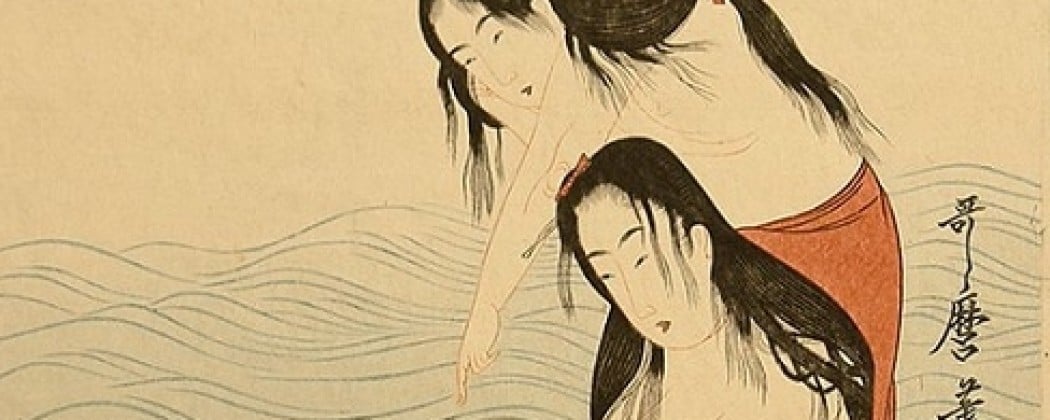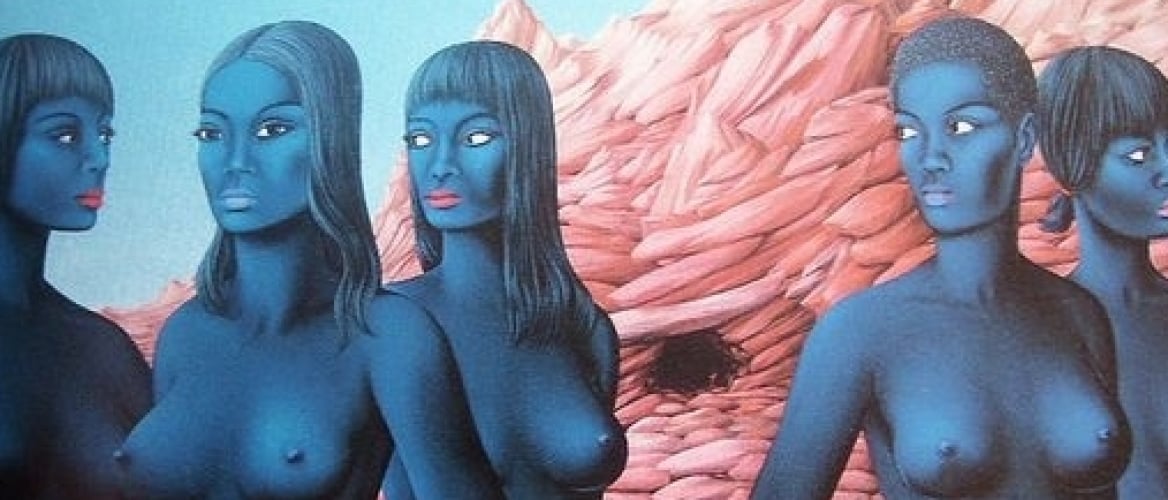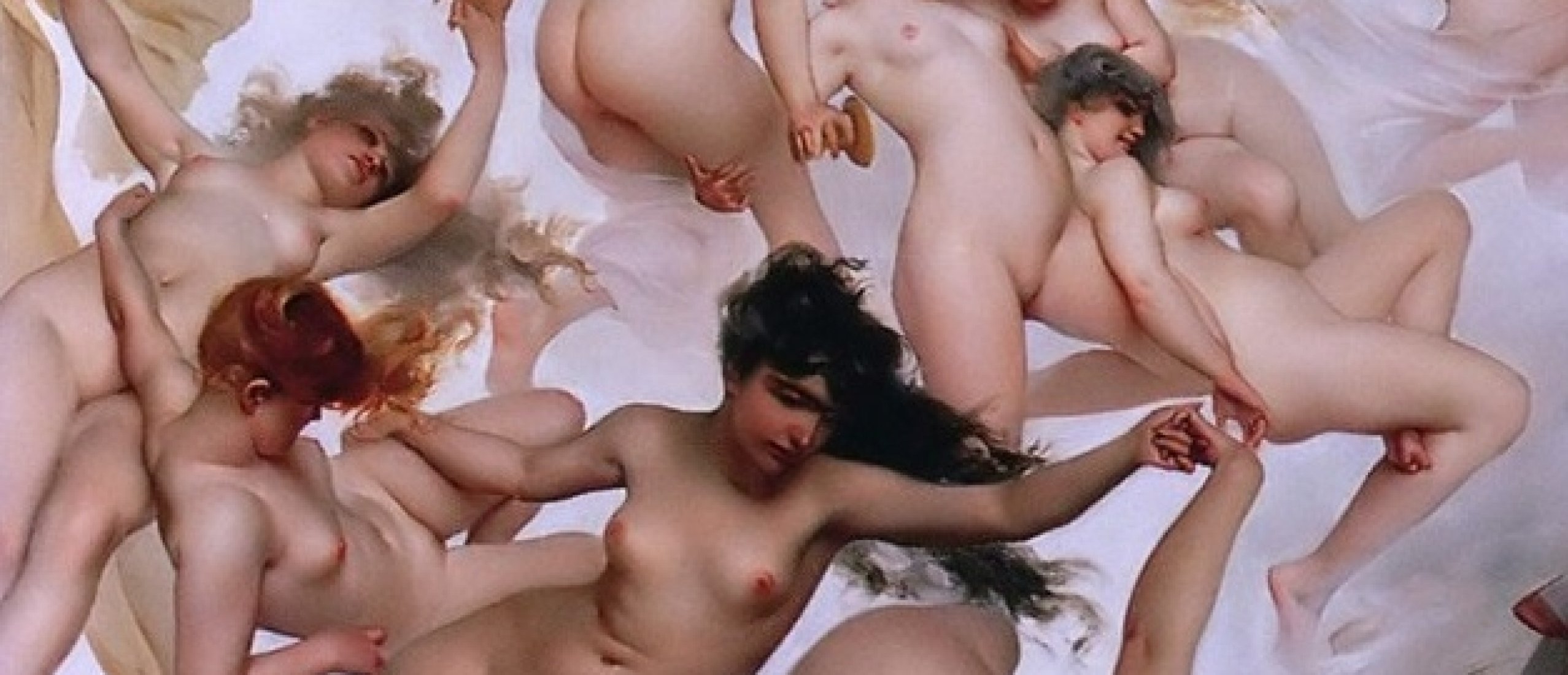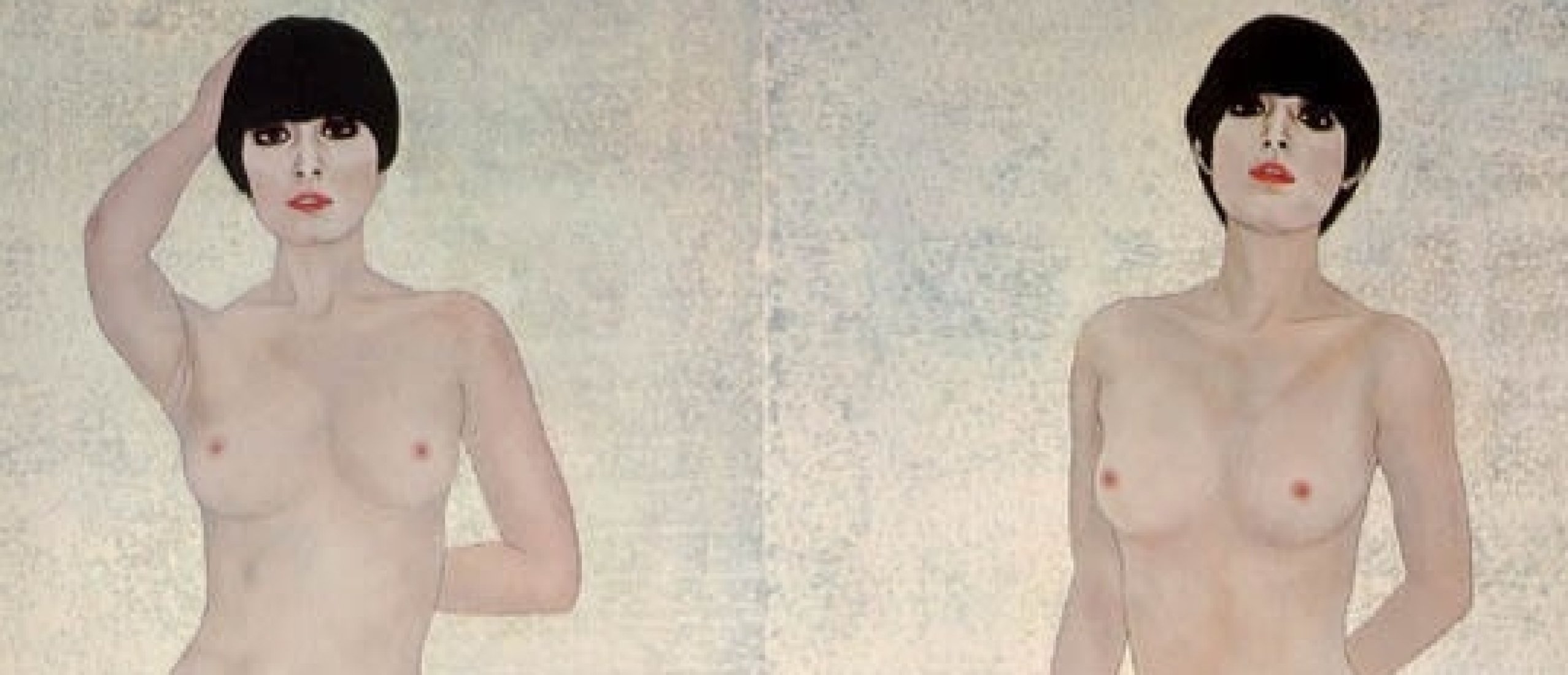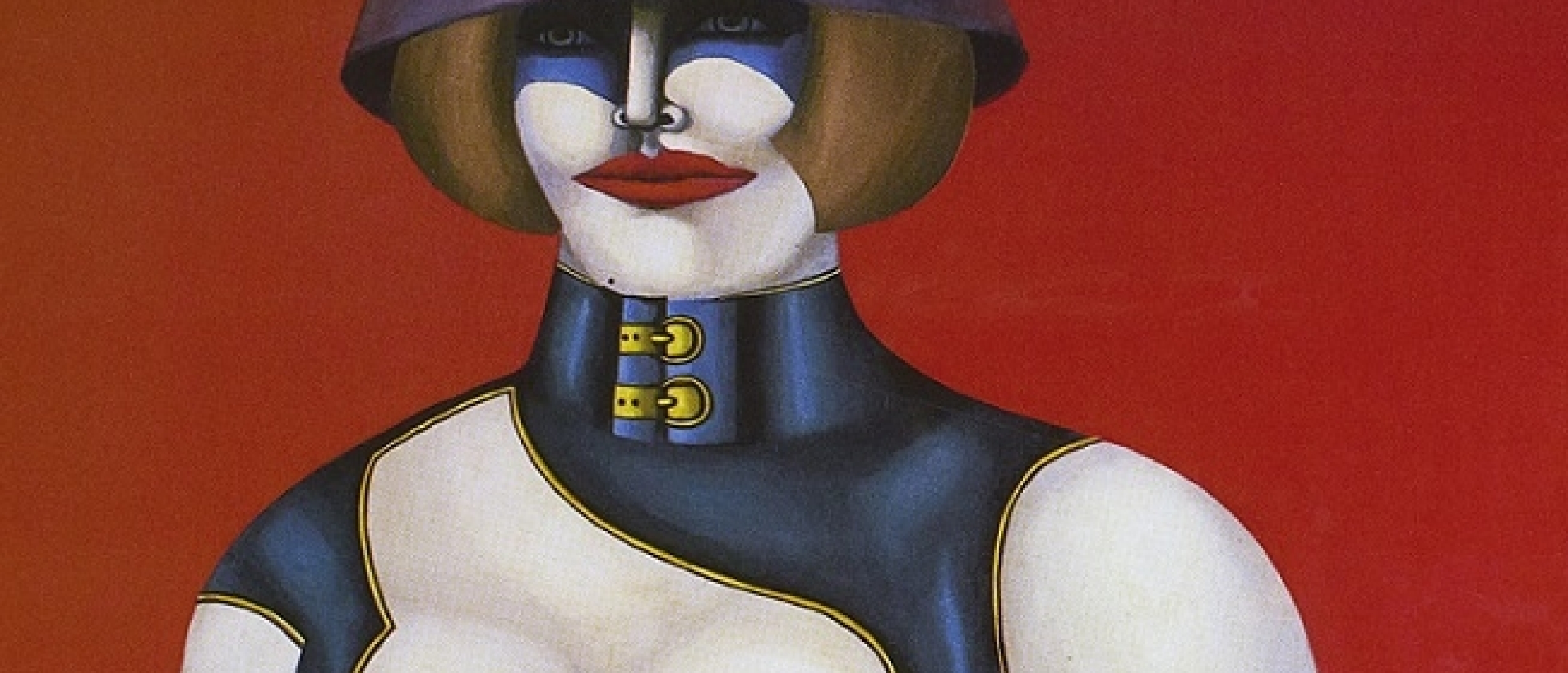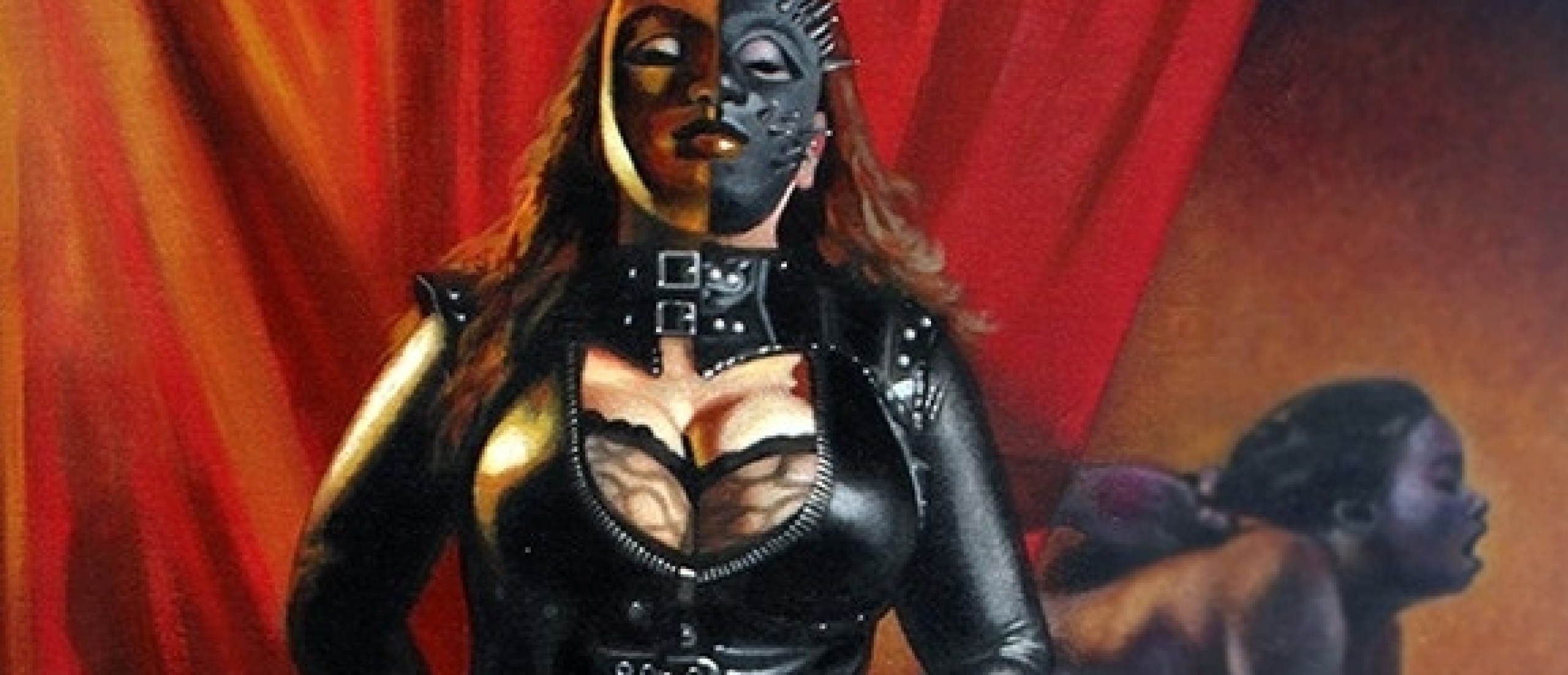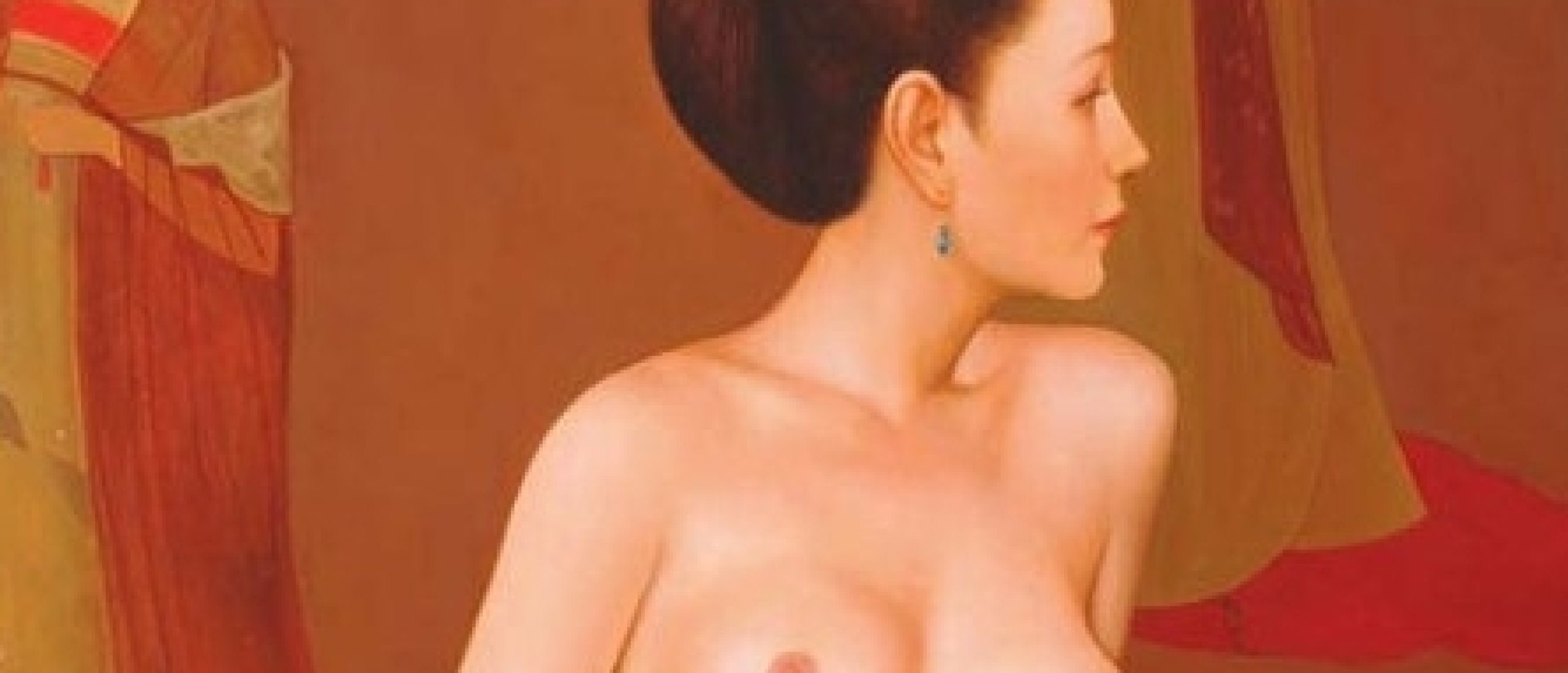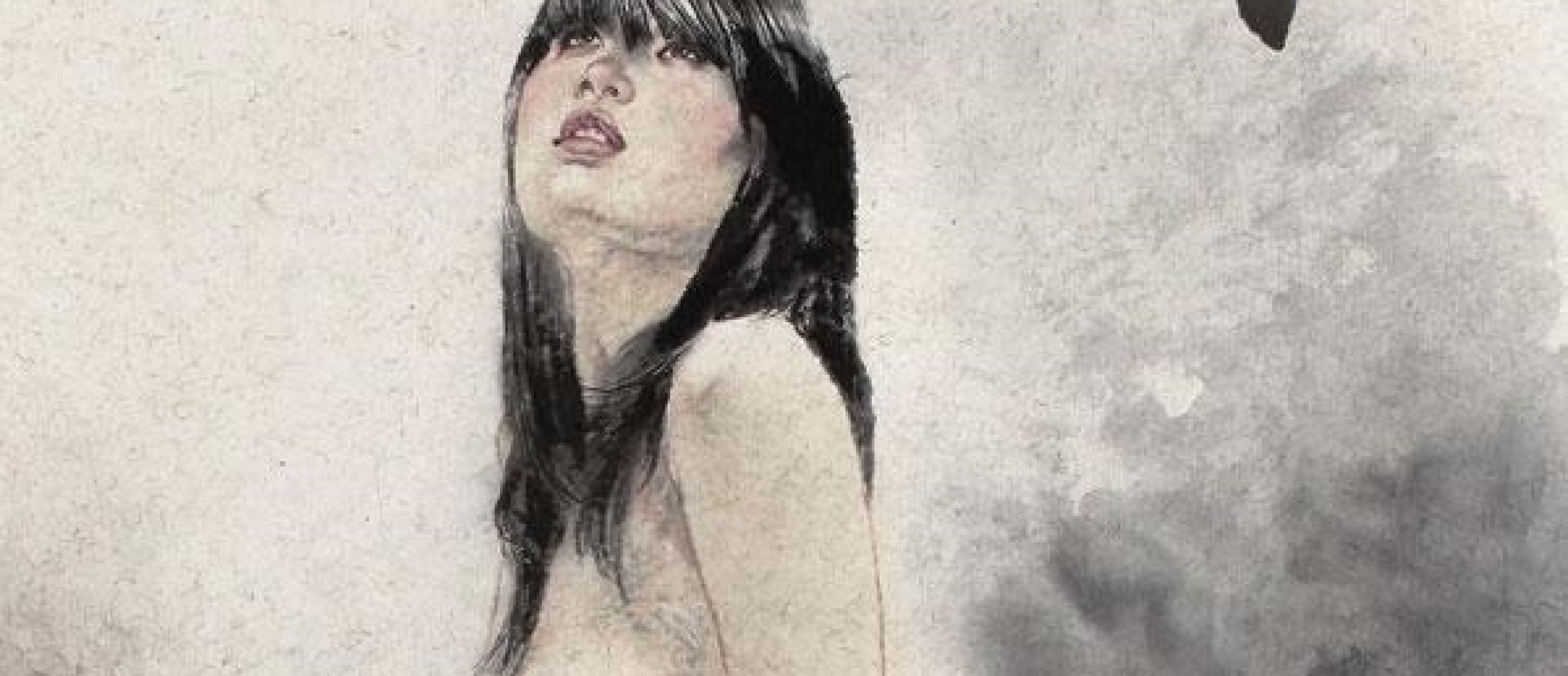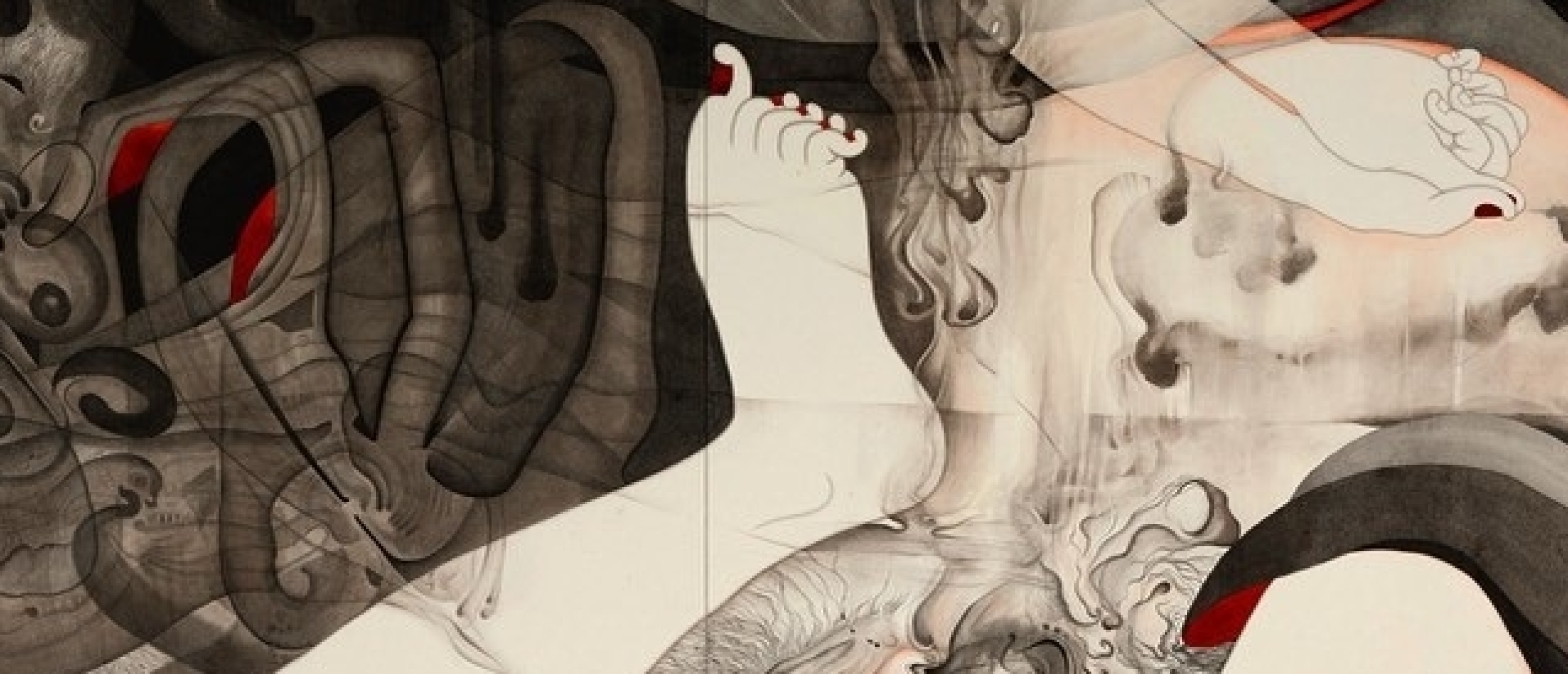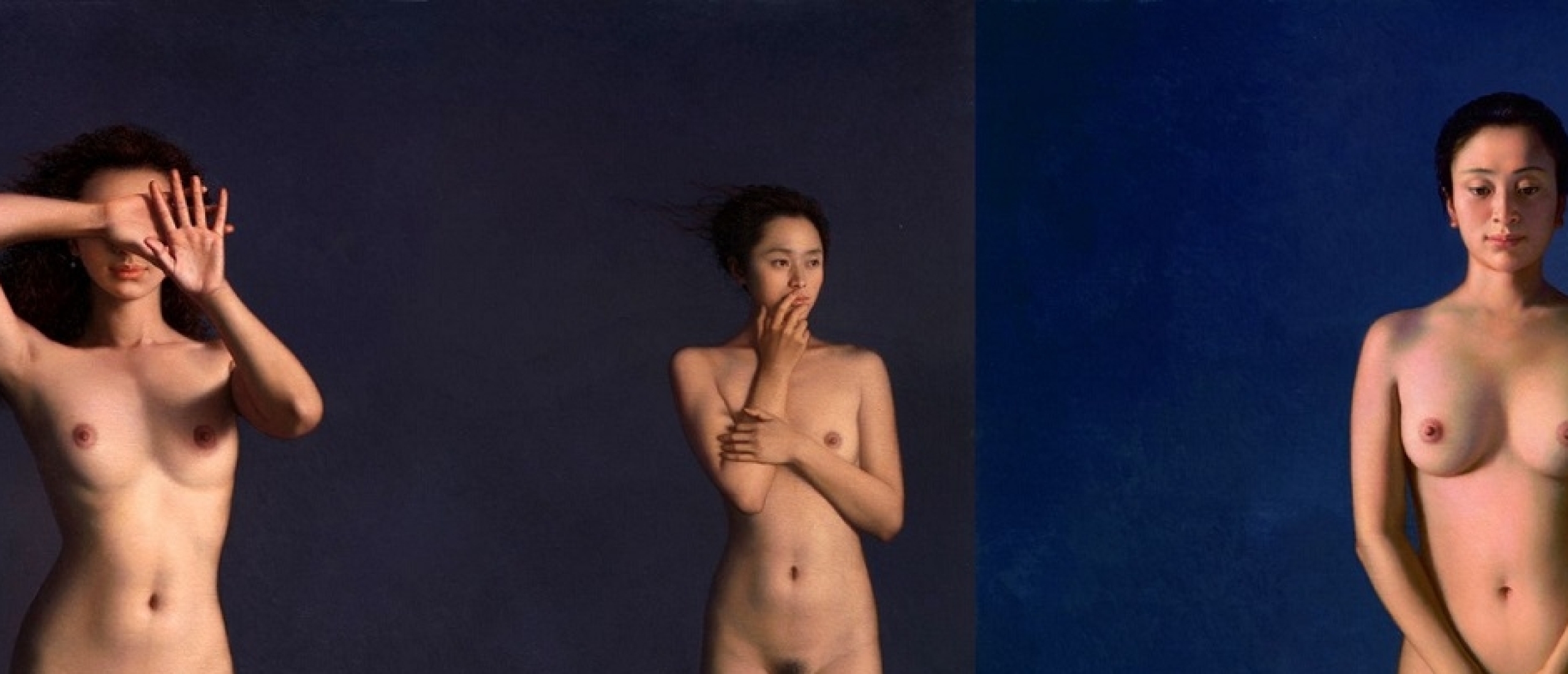
Weng Wei (b. 1962) is a painter and teacher living in China. His works can be distinguished by photographic accuracy and conceptual simplicity. As the artist says himself, "My daily job is to use painting to record the city I live in and the people around me that I am familiar with and unfamiliar with. My judgment on the quality of my own work is just whether it looks like what I see, whether it is what I perceive, and that's all." In the current article, we'll examine a set of Wei's paintings drawn from the early 2000s to 2021. The images depict nude women in a dreamy landscape or abstract space.

Fig. 1. Weng Wei, 2019 (artron.net)
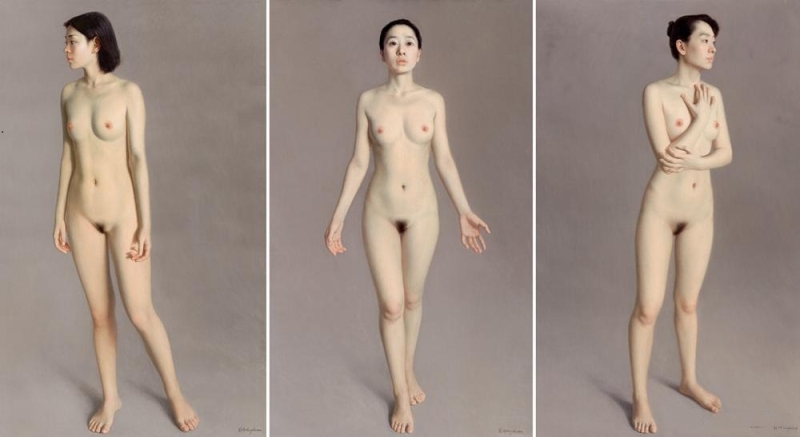
Fig. 2. I, 2004, triptych (artron.net)
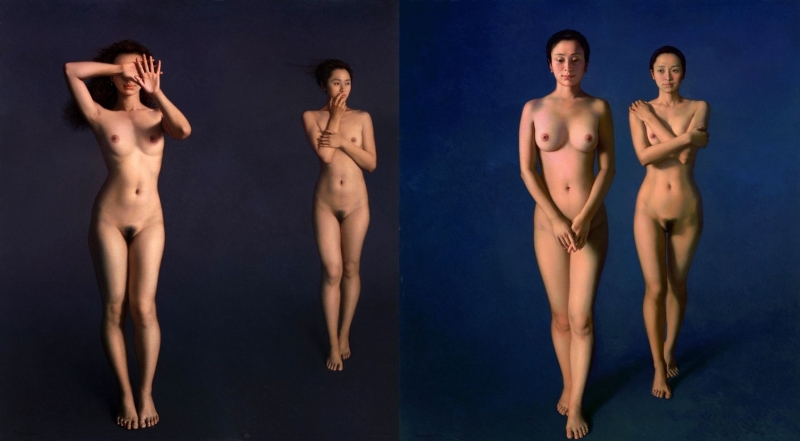
Fig. 3. Purple Air Comes from the East, diptych, 2009 (artron.net)
Ten Years to Draw Something Seriously
The artist was born in times of The Up to The Mountains or Down to The Countryside movement. This policy tended to change the pro-bourgeois moods of the young urban people. The party sent them to the rural area where they were supposed to gain the experience of farmers and workers. Mao Zedong stated that urban students could "develop their talents to the full" through education amongst the rural population, which practically meant the deprivation of university education. As Wei notes, each family could have only one child by their side while the rest were meant to be sent away. The artist's older brother stayed in the city, which decided Wei's fate. At the same time, the possibility of him working as a farmer seemed dubious to his parents as the artist was a frail child: he had encephalitis at the age of 3 and myocarditis at the age of 11. Thus, the family decided that Wei should learn painting to be able to do something instead of the farm work in the commune. Indeed, Wei grew up to become a professional painter and teacher. At 16, the artist enrolled in the Hebei University Department of Fine Arts. After graduation in 1988, he was assigned to teach fine arts at the middle school. In 1988, he was transferred to Beijing and conducted oil-painting seminars at the Middle School Attached to the Central Academy of Arts and Crafts. Wei's works are exhibited in China and abroad. Being a successful artist, Wei confesses, "after more than 20 years of experience, I seem to have only just learned about painting. What I'm thinking about right now is to prepare to use ten years to draw something seriously." This statement corresponds with a famous quote by Hokusai: "I have drawn things since I was 6. All that I made before the age of 65 is not worth counting."

Fig. 4. Fly, 2011 (artron.net)
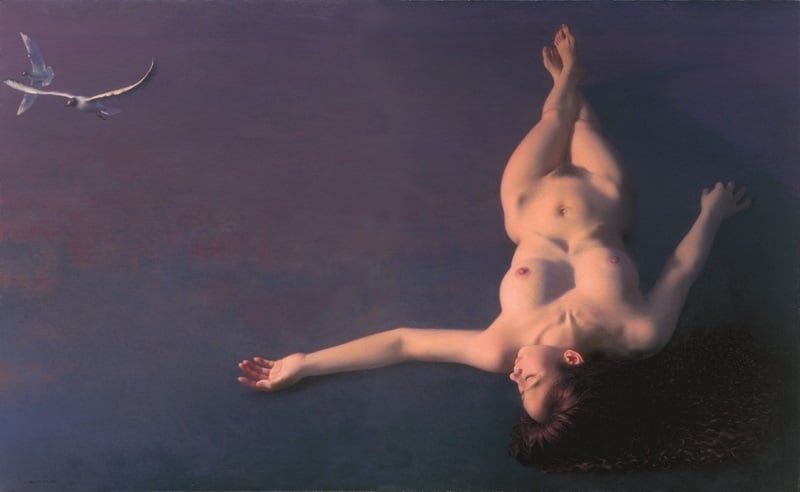
Fig. 5. Forever, 2012 (artron.net)

Fig. 6. Golden Bird Flying in the Sky, 2021 (artron.net)
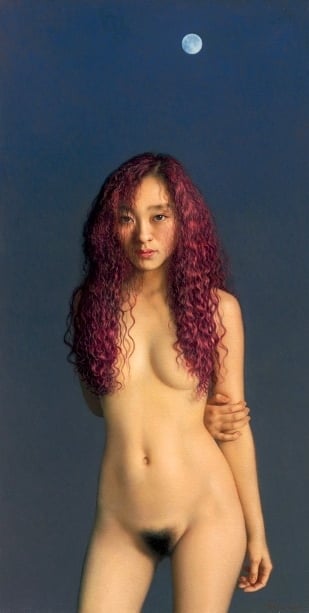
Fig. 7. Blue Moon, 2011 (artron.net)
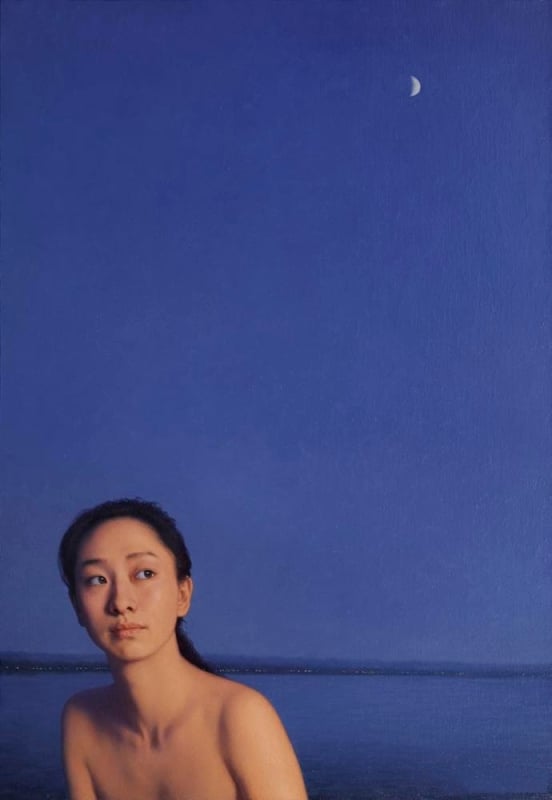
Fig. 8. Half Moon, 2018 (artron.net)
East and West
Speaking of his art, Wei remarks that oil painting is often considered to be difficult for the Chinese audience to appreciate since it's a western tradition. Despite the disputableness of this opinion (Weil calls it a myth), one can't deny that Weil's works look more familiar to a western viewer. The manner and colors of the set in the article may remind you, for instance, of the Belgian painter René Magritte and his work The Evening Gown (fig. 9) or the images by another surrealist, Felix Labisse (fig. 10). Though Weil labels himself as a recorder of what he sees, which leads us to realism, some paintings clearly represent surrealism. The artist places the female body in the abstract landscape: the sea, the moon, and the horizon. Speaking of the parallels in western and eastern art, let's mention that Magritte opposes men to women as rational to irrational. Interestingly, it's Adam whom the artist makes responsible for the fall, as "buttoned" men in his paintings represent the humans spoiled by apples of knowledge. Wei reflects upon his existence in a more eastern way, focusing on eternal things rather than the current civilization, he's more emotional than philosophical. The titles of the paintings (Purple Air Comes from the East, Fly, Nostalgia Song, etc.) emphasize their dreamy nature. Female characters seem to embody timeless phenomena like the wind, the sea, and the universe in general. The triptych depicting three women is simply entitled "I" ("Me"), which can mean that female figures symbolize one more thing: the timeless soul of the author.
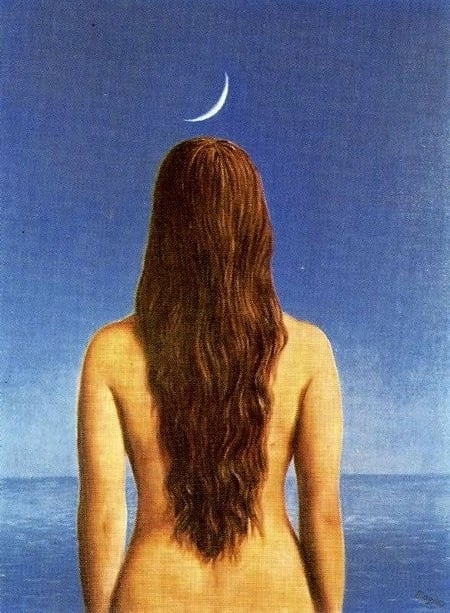
Fig. 9. René Magritte The Evening Gown, 1954 (wikiart.org)
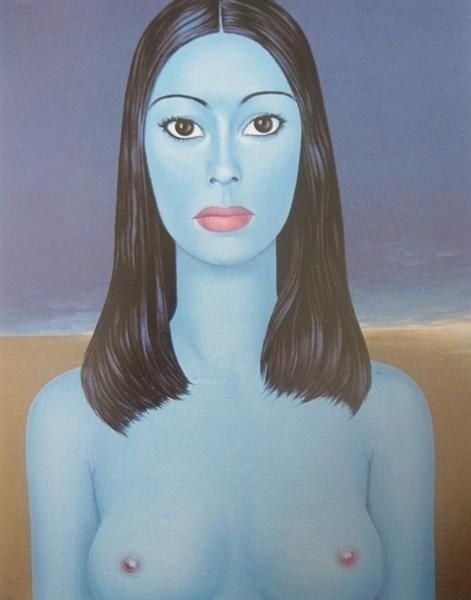
Fig. 10. Felix Labisse Sukirah, 1977 (wikiart.org)
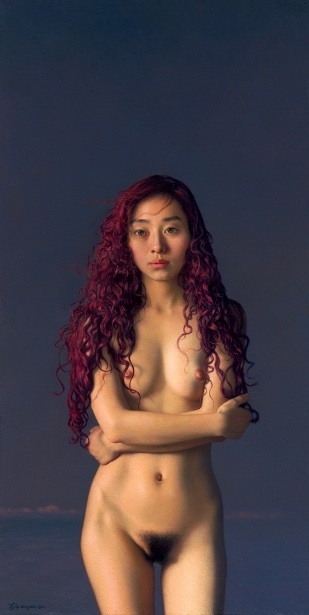
Fig. 11. Horizon, 2011 (artron.net)
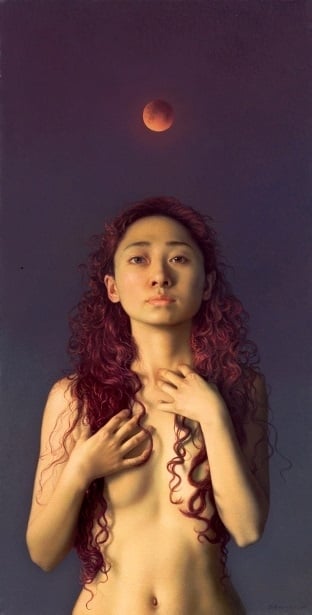
Fig. 12. Full Moon, 2011 (artron.net)
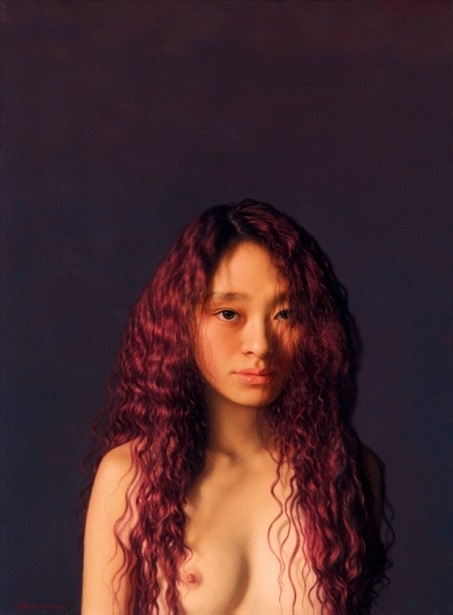
Fig. 13. Red Cloud, 2010 (artron.net)
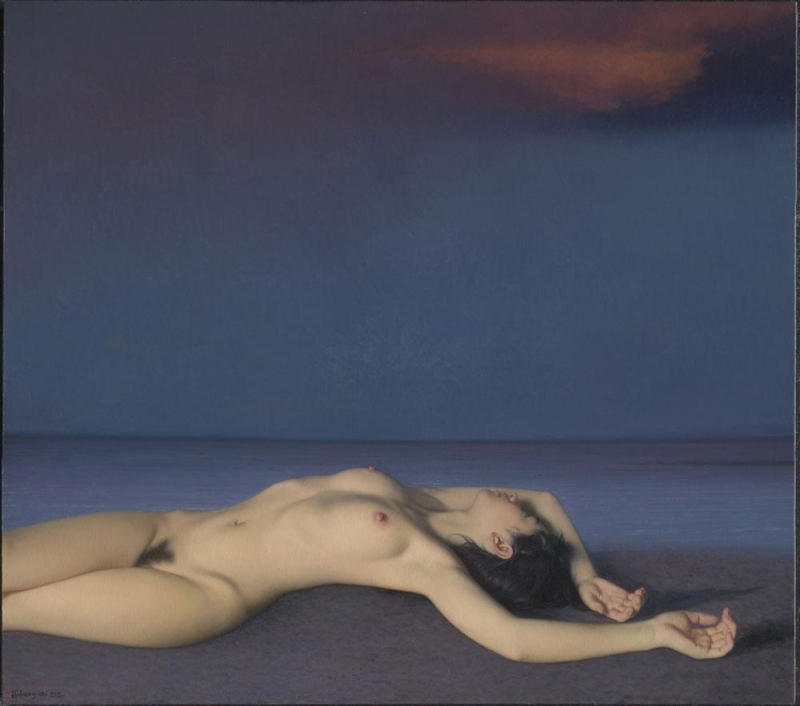
Fig. 14. Red Cloud Drifting at the Distance, 2015 (artron.net)
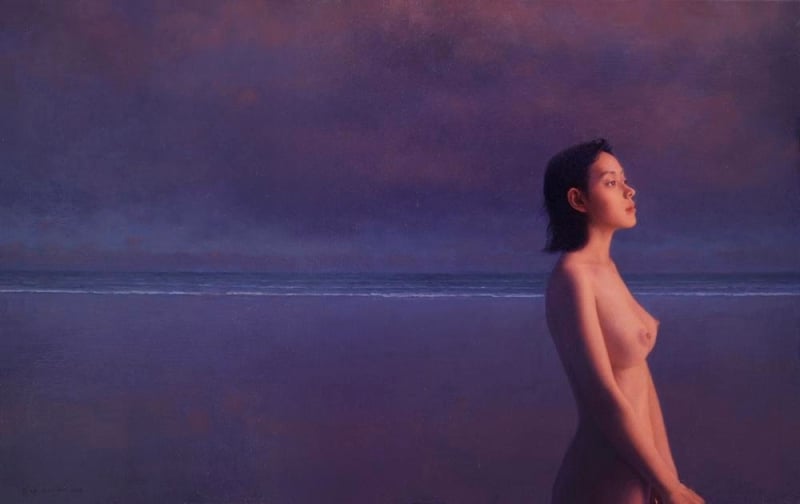
Fig. 15. Sunset, 2018 (artron.net)
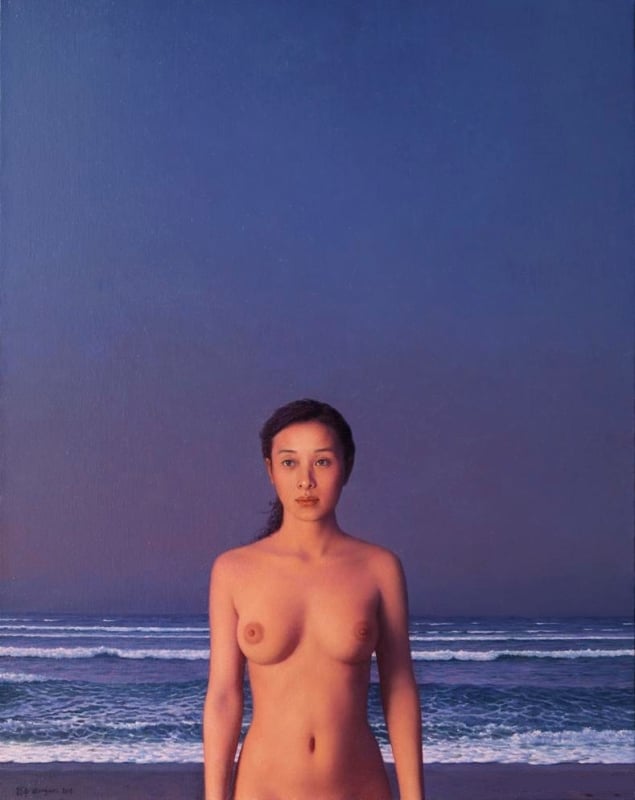
Fig. 16. Morning Light, 2018 (artron.net)
In Premium you can check out an extended version of the article with twice as much images of Wei's female nudes...!!
Sources: the official site of Weng Wei wengwei.artron.net; conchigliadivenere.wordpress.com; Wikipedia.org
Click HERE and examine our complete modern western erotic art section...!!
What do you think about the oil paintings of Weng Wei? Leave your reaction in the comment box below....!!

